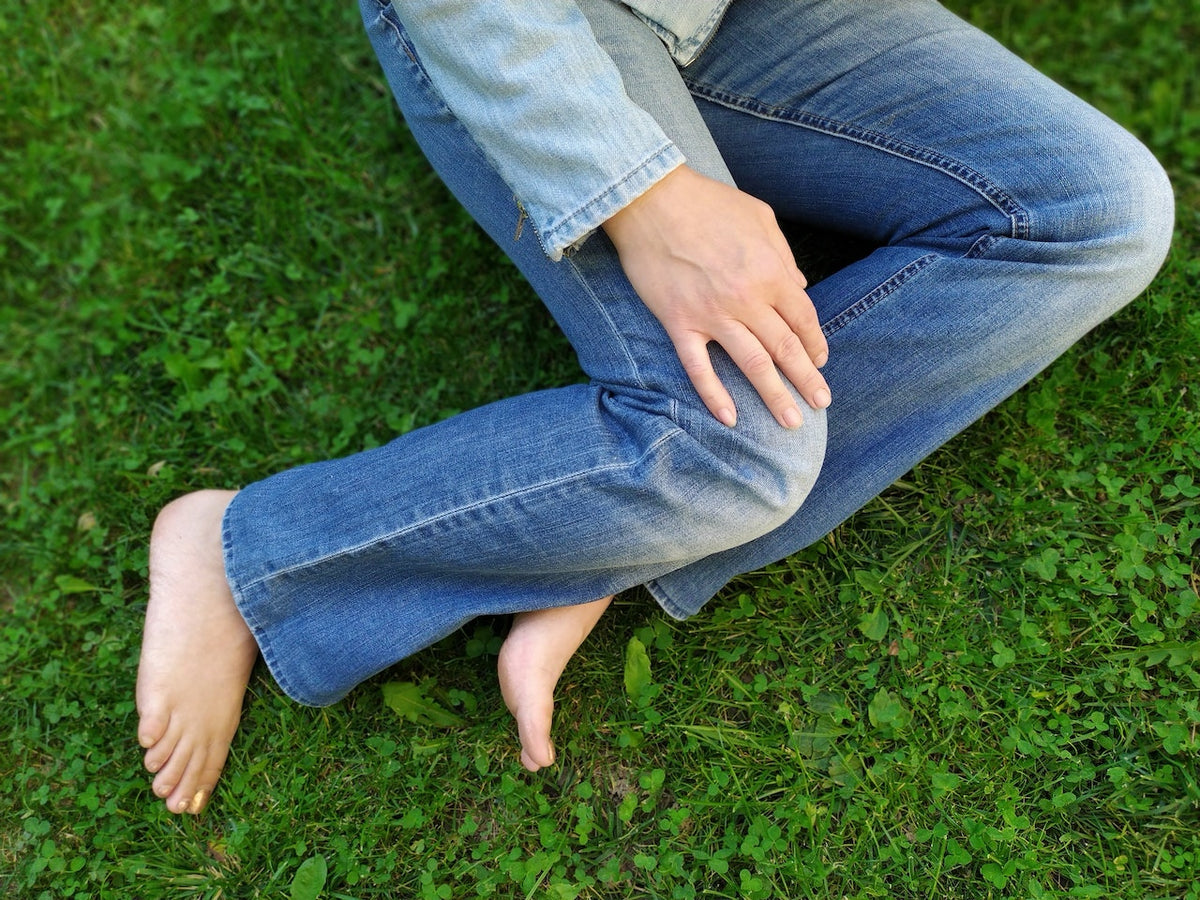
Having pain that runs along the outside of your foot can end up affecting your mobility, making it painful or difficult to walk or stand.
There are multiple conditions that can present as a painful sensation along the outside of your foot, so how do you know which one is causing you trouble?
The best way to get a proper diagnosis would be to have a doctor’s visit.
But, in this article, we will cover some of the most common causes of pain on the outside of the foot, to help you get an idea of what might be going on.
Arthritis can occur anywhere where you have joints, so your feet are no exception.
The pain can sometimes be felt running down the outside of the foot due to increased inflammation from Rheumatoid or Osteoarthritis.
The most common symptoms of arthritis in the feet include:
Pain when foot in motion
Pain that gets worse with vigorous activity
Tenderness when pressure is applied
Redness, warmth, and swelling around a joint
Worsened pain or swelling in the morning or after resting
Difficulty walking
Peroneal tendonitis is the inflammation of a tendon that runs down your shins, wraps around your ankles, and ends on the outer side of your feet.
When this tendon becomes inflamed from excessive running, abnormal walking positions, a muscle imbalance in the legs, or collateral damage from an ankle injury, the first sign may be difficulty walking that gets progressively worse.
The most common symptoms of peroneal tendonitis are:
Pain at the back of the ankle
Pain that gets worse with activity, but better when at rest
Pain when turning the foot
Swelling around the ankle
Feeling of instability when standing
Warmth around the area
When you sprain or “twist” your ankle, you normally accidentally roll your foot underneath the ankle.
This movement can cause the ligament on the outside of the foot to stretch or tear, causing a lingering pain on the outside of the foot.
Most people who have had an ankle sprain can pinpoint the exact accidental movement when the injury occurred, such as slipping, taking a “misstep”, or playing sports.
The most common symptoms of an ankle sprain are:
Pain
Swelling
Tenderness
Bruised ankle
The cuboid bone is a square-ish-shaped bone located amidst other bones in the mid-upper side of the outside of your foot.
Cuboid syndrome occurs when there is a partial dislocation of the bones in this area which causes the cuboid bone to move down and out of alignment.
Cuboid syndrome is most common in athletes, but may also occur during an ankle sprain injury, or walks with their feet turned inward (protonation).
The most common symptoms of cuboid syndrome include:
Pain on the outside of the foot
Pain that worsens when putting weight on the foot
A dull, aching pain, or a sharp, stabbing pain
Trouble walking
Difficulty hopping
Worsened pain when lifting the heel and pushing off toes
Swelling
Reduced range of motion
Bottom of feet sensitivity
Possible pain sensations around the ankle from referred pain
Stress fractures are tiny breaks in the bones of the feet that are so minor they are not nearly as painful as full breaks but may cause increasing discomfort around the area.
Stress fractures occur most often during athletics, especially in people who just drastically increased their activity levels.
The most common symptoms of a stress fracture are:
Progressively increasing pain
Pain worsens with activity
Swelling and tenderness around the fracture area
Bunions occur when the big toe starts abnormally leaning in towards the other toes, leaving a bony protrusion sticking out under the large toe.
Eventually, this may cause pain when standing or walking due to the normal structure of the feet bones being displaced.
Bunions can happen from wearing shoes that do not fit properly, develop from an inflammatory condition, or they can be inherited from your family.
The most common symptoms of bunions include:
Large toe leaning inward
Large bony bump underneath the big toe
Increased pain and deformity
Potentially crossed-over toes
Redness
Corns and calluses occur when the skin produces multiple tough layers in one area, calluses tend to feel rough, but rarely cause pain, but corns may put pressure on the inside of the feet and be painful.
These can both occur from excess friction in an area of the outside of the feet, due to improper footwear, excessive usage, or any reason for excess friction on the outside of the feet.
The main symptoms of corns and calluses are:
Thick hardened patches of skin
Corns may be smaller, yellowed, painful, and more rounded
Tarsal coalition is a condition that develops when there is an abnormal connection between two or more of the bones towards the back of the foot.
The bones with tarsal coalition abnormal formation normally are present from birth, although symptoms may not present until much later in life.
The most common symptoms of tarsal coalition are:
Pain when walking or standing
Fatigued legs
Muscle spasms that make the foot turn outward
Flat feet
Limping
Foot and ankle stiffness
Here at Zen Nutrients, we carry a general foot support supplement with vitamins, minerals, glucosamine, collagen, MSM, and anti-inflammatories to help aid in general foot health.*
This formulation was crafted by doctors and pharmacists with the goal of foot health support.*
To learn more about our PodiVite foot support supplement or place an order, you can go to the PodiVite product page at ZenNutrients.com: Here.
*These statements have not been evaluated by the Food and Drug Administration. These products are not intended to diagnose, treat, cure or prevent any disease.